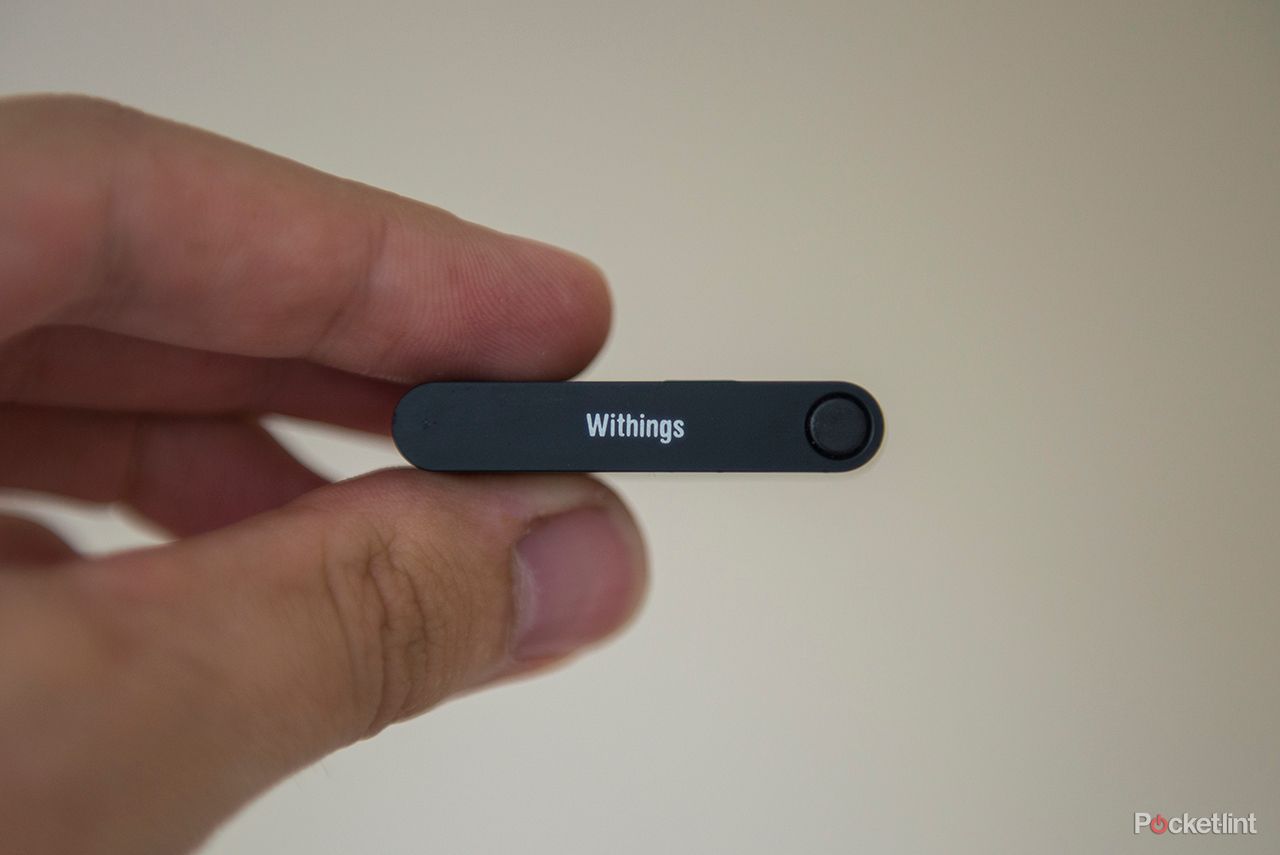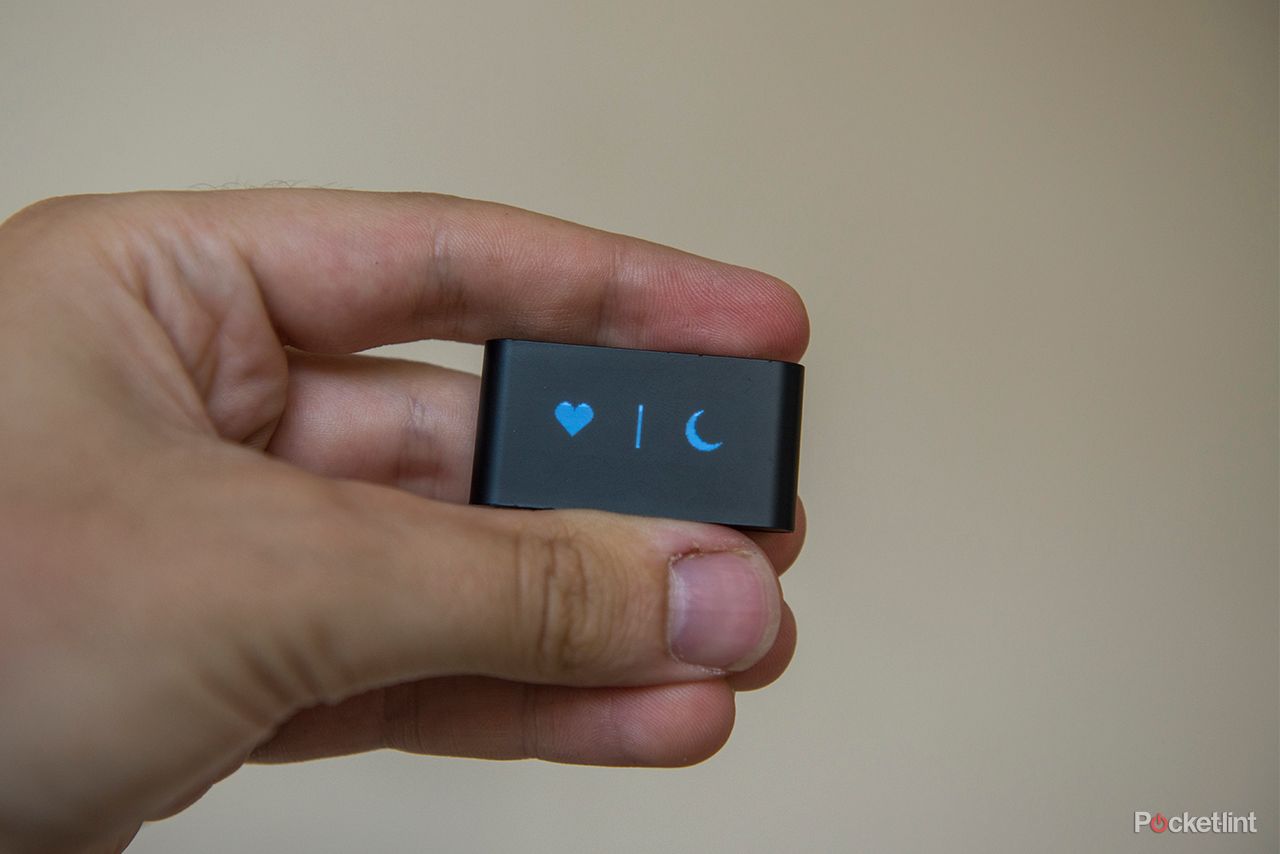Wearable tech and fitness products go hand in hand. When it comes to pedometers to track your walking - the idea being to focus on fitness to some degree - there are many to consider, including the Withings Pulse activity tracker.
Our quick take
For all its good Pulse hasn't totally connected with us. But then it might with you. It's all about where you're at.
For some the Pulse will be a miracle product. For others, like us, it's not really something we need. For beginners, or those who are in the right frame of mind to give themselves a kick up the backside and get more active, then the Pulse works well for step-based movement. Walk and jog and you're in safe hands here, so long as your mind set is focused on knowing you need to take your Pulse out with you. Other activities aren't catered for though, and if you don't walk much but invest in other fitness activities for a healthy lifestyle then there are other dedicated options out there, and you might already be beyond the reach of the Pulse and what it's about.
The size of the Pulse, as we alluded to in the intro, is a double-edged sword. Yes, it's small and light which sounds like a benefit, but we've lost count of the number of times we've left it in yesterday's jeans, narrowly avoided the washing machine, or simply forgotten about it altogether.
We've seen the highs of Pulse, of which there are plenty, but we've also seen the lows when it's refused to read our heart rate, run out of battery mid-day in our pockets, been forgotten about, misplaced, or just inaccurate based on our activities. Some are our shortcomings, others the device's limitations.
We like the app and website integration and the fuller Withings ecosystem. There is a broad audience that will get plenty from this product. It's fairly priced, but with the yet more affordable FitBit One offering much the same the Withings Pulse has its work cut out.
As do we all. So with or without a fitness device just get out there: get walking, get exercising and be healthy. Only you can make that part happen, but for some Withings Pulse will be a non-physical kick up the backside to get started.

Withings Pulse activity tracker - 4.0 / 5
| FOR | AGAINST |
|---|---|
|
|
Withings Pulse activity tracker
This small, pocketable device tracks your daily steps, can measure heart rate (hence its name), sleep patterns, deliver information to your smartphone via an app and collate data online in a personalised Health Mate site.
All that sounds very promising, doesn't it? But unlike its similar - and often more wearable - competitors, such as the Jawbone Up, the Pulse is a dinky device and it's this size that makes it a double-edged sword. So small it's barely noticeable, but also that it's easily forgettable. We've been using the Pulse for a number of months to get a true feeling for how well it integrates into daily life.
READ: Jawbone Up (2013) review
Dinky design
Small is beautiful. The Withings Pulse weighs in at a mere 8g and measures just 43mm across. It's teeny tiny and that means it fits perfectly into the small pocket of your jeans, a bag or anywhere. You could even stuff it in a sock if you want - something we've done a number of times, in fact.
![]()
On the front of this little black box is an OLED touchscreen with a 128 pixels x 32 pixels resolution that displays your progress across several categories. It's not a smartphone-like screen, but is easily legible, although the touch-responsiveness can lack. However it's a good idea that's well thought out, separating the main category screens - steps, elevation, distance, calories, heart rate / sleep, current time - via the press of the sole button on top of the device, and breaking those down further - such as walking steps vs running steps - by a left- or right-swipe of the screen.
But small isn't always beautiful. The Pulse is so small we've misplaced it several times, or left it in a pocket and forgotten that we've not swapped it along with our clothing. Definite washing machine danger right there too, and Pulse isn't waterproof. It's too easy to forget about as it's so small and so light - it's not the kind of "look at me" wearable tech, like the Nike+ FuelBand or similar, and that made our brains disengage a little. Others might find that far more appealing.
Furthermore, forget about the Pulse for too long and you'll also forget to charge it. A claimed "two week" battery life was never realised throughout our testing: it's about half of that. Some might say that's not too bad, but when older pedometers used li-ion batteries they lasted for several months at a time.
![]()
We'd consider the Pulse to be "half-wearable" as it does come with a wrist strap and belt clip. But those aren't the most secure methods of wear and we'd prefer the strap to be large enough to encompass a full arm width that'd be far more useful when out running. The strap is predominantly designed for wearing at night to measure sleep, something that we didn't get on too well with.
Tech or teach?
Being aware of your activity is a good thing. You might buy the Pulse in the knowledge that you need to do more and realise that you're walking hardly anywhere in a given day. In that case this could be a positive device for you - even if just to start you off and give you a better physical relationship with what walking a set distance means in the real world.
The goal for an average person is to hit 10,000 steps a day, which is around 4 to 5miles. Might sound unreasonable, might sound easy. But if you're only doing 2,500 right now then doubling that might make you feel better, improve resting heart rate, give you a boost of life and burn a few calories along the way. It's not all about getting rake thin, it's about improving health by activity.
If weight loss is your goal then walking can play its part, but don't forget that weight is dependent on calories in, calories burned, and metabolism to some degree. Staying active, eating small, often and appropriately for your regime (or non regime) are all appropriate responses. Fasting and walking 10,000 steps a day will just make you feel like crap, so ensure your body is nourished correctly. Effective weight loss doesn't happen over night.
But all that is as an aside to Pulse: it won't teach you that, and if you have bad habits - and we have many, oh hello beer number whatever - then you'll need to think about making bigger changes. Withings does have other tie-in options in its fitness ecosystem, including digital scales, and the MyFitnessPal calorie counter, that may go some way to assist in your goals. All worth investigation.
READ: Withings Smart Body Analyzer review
You'll need to get involved in this wider ecosystem if you want increased measures and details available to digest. But you'll need to dedicate yourself to it. Calculating calories consumed day by day isn't a simple task for most normal people, even if there is a system to help you. A big reason for that is portion size.
Accuracy
The Pulse is all about steps, so walking is its forte. If you're exercising by cycling, swimming, light weight training, yoga, or whatever else fits your lifestyle then the Pulse may have limited appeal; it won't assist you in all of your activities.
For example, we cycle 18kms on a daily basis and know our cadence, speed, distance and route - thanks to the Polar RC3 - and even with the Pulse in our cycling socks it wasn't ever able to deliver an accurate read. Distance and elevation was wrong to non-existent, but we know the "steps" were way off because we know our exact cadence (rotations per minute) and simple maths between the two didn't add up.
READ: Polar RC3 GPS cycling watch review
So the Pulse isn't totally accurate, but it is more than a good enough guide. We've sat down on the sofa before now and added three steps to our total, so as a spot-on measure we're not totally convinced.
The name of the Pulse is also a key to one of its big features: the heart-rate measure on the rear of the device. Pop a finger against the sensor and, along with giving a green glow, it will take your pulse. But, again, it's not always 100 per cent accurate. As well as several non-reads, we measured our heart rate at 53bpm on one occasion and knew it to be wrong as we're not that fit. Even on a good day we'd sit at around 60bpm at best when relaxed, closer to 65bpm for the norm. Furthermore there were times when the pulse-check feature failed to work whatsoever - it just wouldn't switch on at all. But when it is on point it's near enough to the mark.
![]()
When it comes to energy, we also found that the "calories" section of Pulse has the potential for inaccuracy. High-activity exercise, body weight, fat proportion and so forth will all impact on ability to shift calories relative to activity. That level of detail isn't here in the one device.
Data, apps and online
But when it comes to apps, synching and data collection the Pulse is up there among the best.
It's possible to companion up with the Withings Health Mate app via Bluetooth to get better visualisation of data, displayed over time. Data is automatically uploaded via Bluetooth so you don't need to worry about plugging in - a great feature, but one that led us to not plug in so often and, therefore, a number of battery-based cut-outs during use. It's our own fault really, the Pulse doesn't fit our current lifestyles that well, but it might yours.
![]()
Add in the Withings Smart Body Analyzer and you'll get yet more data, and that's when things get more interesting for charting weight loss and fat percentages.
If you don't get in on the app front then a decent Health Mate beta website is also in operation. Clear, colourful visuals, the ability to set goals and view your data over a number of days, weeks or months looks great and is genuinely useful. It's customisable too - add in measurements, take panels away or click and drag them around the page. Good job.
However all the connectivity and app-sync stuff isn't clever enough to alert you to your day's progress - say you're 2,000 steps shy of your goal by a certain time of day there's the potential for your smartphone to buzz an alert suggesting you go for a jog, for example. Perhaps that's something that'll happen in future firmware updates.
Withings Pulse activity tracker
To recap
We like the app and website integration and the fuller Withings ecosystem. There is a broad audience that will get plenty from this product. It's fairly priced, but with the yet more affordable FitBit One offering much the same the Withings Pulse has its work cut out.

